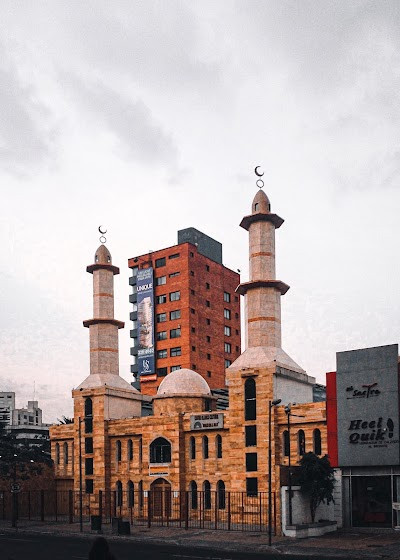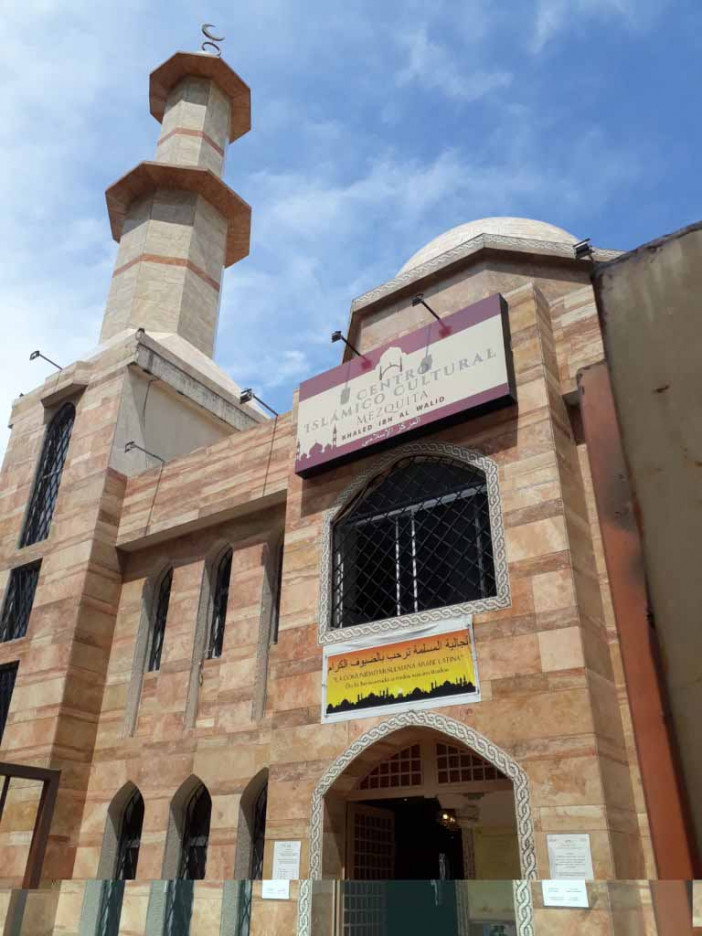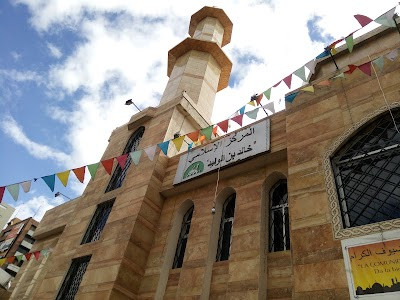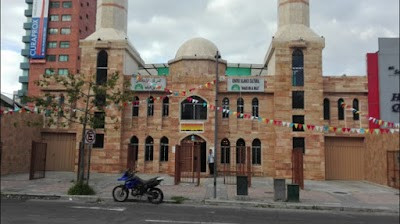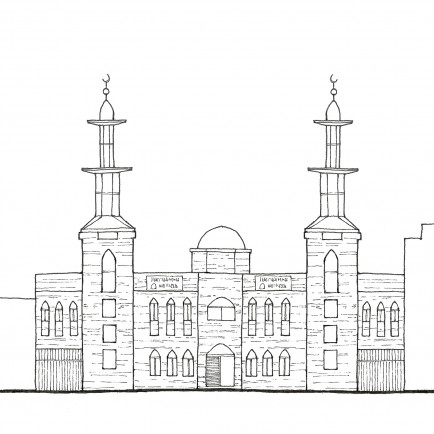Khaled ibn al-Walid Mosque
History
The history of the mosque began in 1988, when a group of five or six Muslims who usually gathered in a private house to perform their rites and prayers decided to start construction. After several attempts, they acquired a first house, where the mosque is located today. After nine years, an initial intervention was made to build the facade. In 2013, the figure of Dr. Wasif Kabli appeared, who contributed to the expansion and final construction.
Urban and Architectural
The old mosque, insufficient for the nearly 2,000 Muslims living in Quito, has given way to a large, renovated space. What is most impressive is its facade, which responds to the principles of Islamic architecture: the large dome with U-shaped arched windows, arabesque decorations, and an imposing minaret (a tall, narrow tower from which the call to prayer is traditionally made). In two months the second one will be built, completing a temple that is impossible to pass unnoticed. The interior of the building dazzles with its "simple opulence." There are few elements, but those that do exist are ornate and colorful. For example, crystal chandeliers through which light is projected in various colors, or its large carpet that recreates typically Arabic arches. At the end of the first floor is the Mihrab, the mosque's most sacred place. It consists of a hole in the wall that marks the direction to Mecca. There the Koran is kept, the holy book of the Muslims.
Description
References
https://centroislamicocuador.wordpress.com; https://cdial.org.br/mesquita-khaled-ibn-al-walid-e-inaugurada-em-quito-ecuador/
Details
Location
Al lado de ambacar, Av. de los Shirys y, Av. Eloy Alfaro, Quito, Equador
Worshippers
2000
Year of Build
1991
Area
400m2
Drawings
Map
History
The history of the mosque began in 1988, when a group of five or six Muslims who usually gathered in a private house to perform their rites and prayers decided to start construction. After several attempts, they acquired a first house, where the mosque is located today. After nine years, an initial intervention was made to build the facade. In 2013, the figure of Dr. Wasif Kabli appeared, who contributed to the expansion and final construction.
Urban and Architectural
The old mosque, insufficient for the nearly 2,000 Muslims living in Quito, has given way to a large, renovated space. What is most impressive is its facade, which responds to the principles of Islamic architecture: the large dome with U-shaped arched windows, arabesque decorations, and an imposing minaret (a tall, narrow tower from which the call to prayer is traditionally made). In two months the second one will be built, completing a temple that is impossible to pass unnoticed. The interior of the building dazzles with its "simple opulence." There are few elements, but those that do exist are ornate and colorful. For example, crystal chandeliers through which light is projected in various colors, or its large carpet that recreates typically Arabic arches. At the end of the first floor is the Mihrab, the mosque's most sacred place. It consists of a hole in the wall that marks the direction to Mecca. There the Koran is kept, the holy book of the Muslims.
Description


